PCIe 4.0 vs. PCIe 3.0 SSDs Benchmarked
High functioning storage is in transition equally the industry is offset to adopt the PCIe iv.0 standard. For now, the biggest change consumers will see is even faster NVMe SSDs on offer. This comes every bit a event of PCIe iv.0 providing double the information rate of the PCIe 3.0 standard. Previous gen SSDs had max speeds of up to 3500MB/s, while the new generation claims speeds upward to 5000MB/s.
Today, we'll be putting several new drives to the exam and comparison them to two of the fastest PCIe 3.0 drives you can buy. Looking at the spec canvass y'all volition quickly notice higher throughput numbers, but what does that interpret to for the average power user? Let's find out.
It should be noted that the first mainstream platform to prefer PCIe iv.0 is AMD's new flagship X570 platform that launched along with third-gen Ryzen processors a few months agone. The X570 platform is aimed at the loftier operation premium segment as information technology enables a number for forward looking technologies not limited to PCIe 4.0 but likewise M.ii Gen 4 storage, the latest USB 3.2 Gen 2 standard, and in some cases, Wi-Fi half-dozen and x GbE connectivity.
In this roundup, nosotros'll be taking a await at the new Corsair MP600, Sabrent Rocket and Gigabyte Aorus SSDs, all new PCIe NVMe 4.0 drives. We have pitted them against the fantabulous Samsung 970 Pro SSD and Intel's tiptop of the line Optane SSD 905P. Exist sure to also check out our roundup from concluding year which includes several other PCIe 3.0 drives.
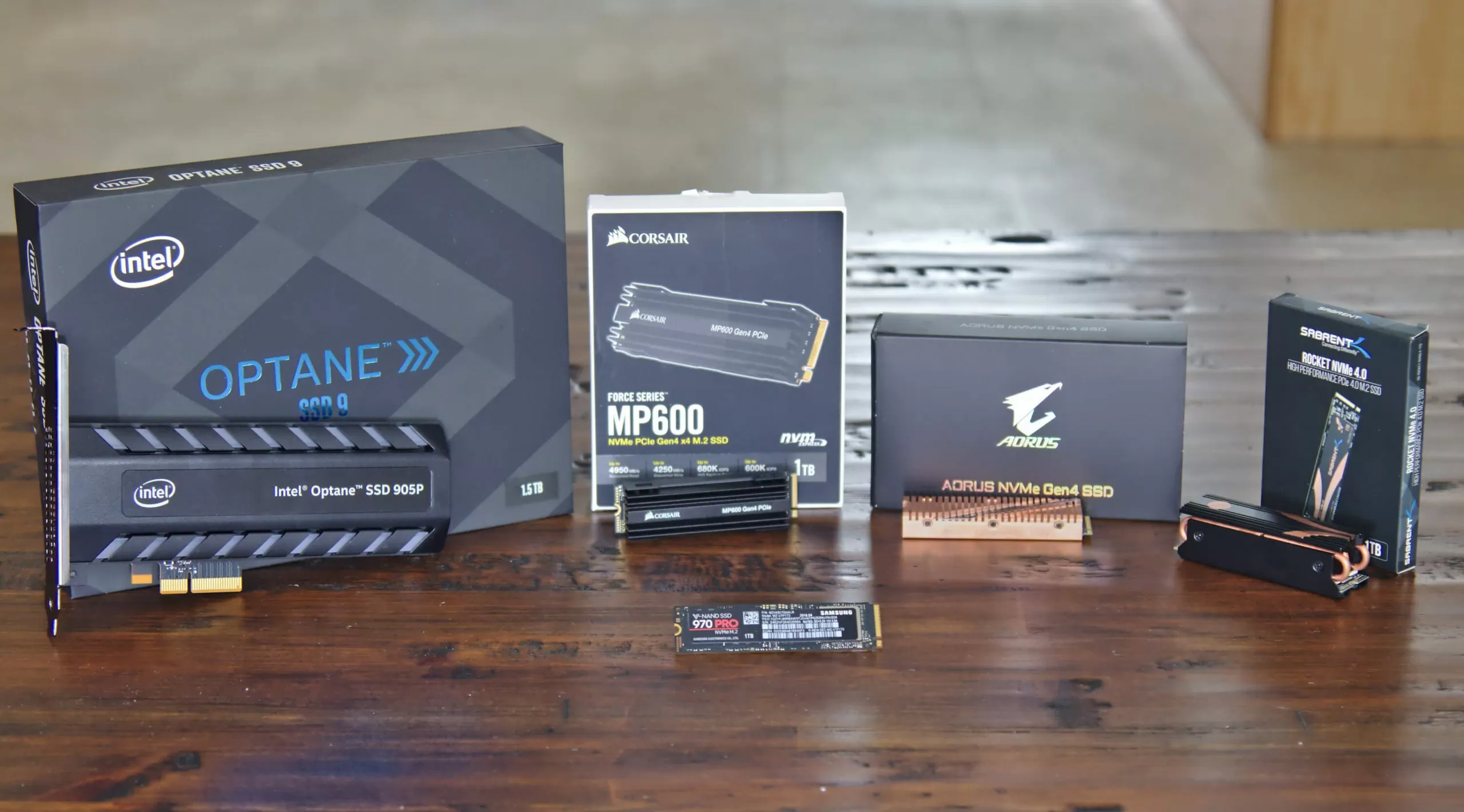
Equally you can see on the table beneath, the new drives are actually a chip more than affordable than the year-sometime Gen 3 SSD 970 Pro (this is the prosumer version of the more affordable SSD 970 Evo). The Optane drive is a bit of an outlier since the technology is still developing and information technology's more of an enterprise drive. Besides the 970 Pro, you tin currently pick up a Gen 3 1TB NVMe SSD for effectually $150-200 depending on the model. This puts the cost premium at most 30% between Gen iii and Gen 4.
The Contenders
| Product | Price | Cost / GB ($) | Interface | Capacity* | Max Read (MB/s) | Max Write (MB/southward) |
| Corsair MP600 | $200 | 0.xx | PCIe four.0 | 1TB | 4950 | 4250 |
| Sabrent Rocket | $200 | 0.20 | PCIe 4.0 | 1TB | 5000 | 4400 |
| Gigabyte Aorus | $160 | 0.32 | PCIe 4.0 | 500GB | 5000 | 2500 |
| Intel Optane SSD 905P | $2,100 | 1.twoscore | PCIe iii.0 | 1.5TB | 2600 | 2200 |
| Samsung 970 Pro | $300 | 0.xxx | PCIe iii.0 | 1TB | 3500 | 2700 |
As with previous generations, the four.0 standard only doubles the speed that the PCIe slot runs at. It at present provides most 2GB/s per lane compared to the 1GB/s per lane of PCIe 3.0. The PCIe 4.0 standard was delayed for almost two years which means that the PCIe 5.0 standard is scheduled to be out in about a year or so. For today'south examination nosotros used Asrock'southward X570 Steel Legend motherboard powered by a Ryzen vii 3700X CPU.
The three PCIe 4.0 drives we received for review are actually very like internally. All are based on the Phison PS5016 controller, all apply Toshiba BiCS4 TLC NAND Flash, and all have an on-board SK Hynix DDR4 cache. Across this, there'due south not much to differentiate the drives besides their firmware -- which notwithstanding an essential part of the equation. Proceed in mind that as with other SSD series, the higher capacity drives will have college rated speeds. All models from Corsair, Sabrent and Gigabyte come up in 500GB, 1TB, and 2TB versions simply merely the 1TB and 2TB variants reach the full speed. The write speed drops to 2500MB/s on a 500GB drive compared to the 1TB or 2TB version of the same product family unit.

The most hit difference between these drives and those from the previous generation are the huge heatsinks. The new controllers and NAND chips run hot, so to avoid damaging them, the manufacturers have strapped on some very bulky heatsinks.
The Sabrent unit even has 6 internal heat pipes. This is the first fourth dimension we've e'er seen integrated heatpipes on an SSD. The Gigabyte unit of measurement is encased in a hefty chunk of copper which makes information technology experience really solid and well built. The Corsair drive has several vertical fins made of what feels like aluminum. Despite being taller than the Gigabyte drive, information technology actually weighs much less.
Just similar with CPUs and GPUs, thermal management is very important on high performance SSDs. Prolonged exposure to high temperatures and inadequate cooling can damage the drives. If yous attempt to remove the heatsinks, the drives will thermal throttle very quickly. Even with the heatsinks on, the drives may still throttle if they are under sustained load for more than than about 15 minutes.
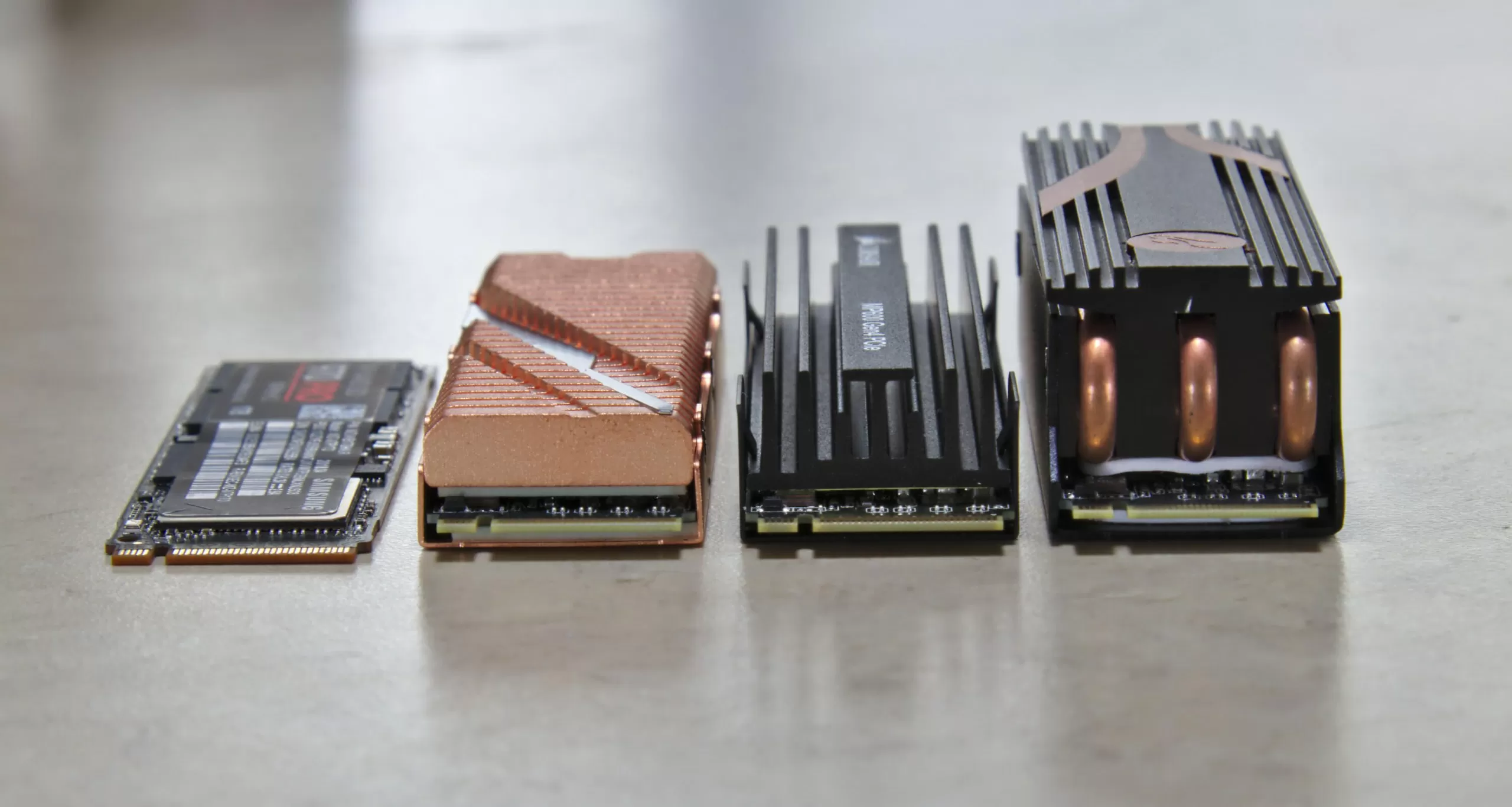
Earlier we get into functioning, we need to get over clearance issues with these drives. Since they are so tall, the Corsair and Sabrent drives won't fit in well-nigh NVMe slots if yous take another PCIe card on top. Well-nigh modern motherboards have two NVMe slots in-between their PCIe slots, and this may be an issue depending on your setup.
If you accept a single GPU and no other expansion cards, yous should be fine with using the lower NVMe slot. If you need to employ those PCIe slots, the Gigabyte drive volition be your only selection since information technology is thin plenty to fit under a GPU.
For motherboards with integrated chipset and NVMe heatsinks, y'all'll likely have to remove that to get the drive to fit. This was an outcome for us on the X570 Steel Fable. We think the better option, if you lot're confident in your motherboard's cooling chapters, would be to remove the heatsink from the SSD and utilize the motherboard'south integrated i.
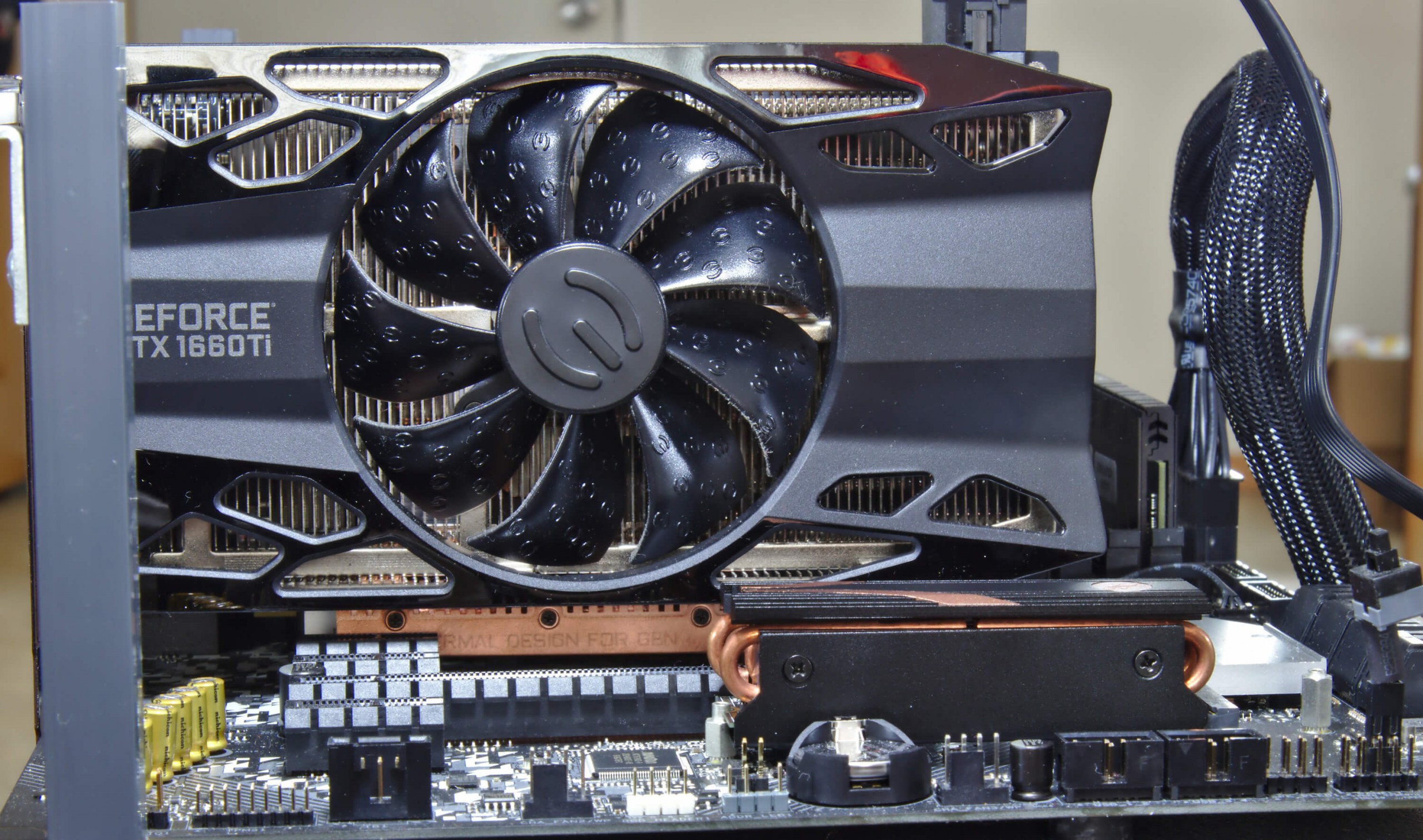
The Optane 905P is kind of a different beast. Coming in at over $2,000, it's almost an society of magnitude more expensive than the other drives in this roundup. The previous generation, SSD 900P, was overall the fastest bulldoze nosotros tested in last year'south roundup. The 905P is an incremental upgrade with some slight performance improvements. Optane technology is designed to bridge the gap betwixt fast RAM and large traditional mass storage, it won't give the fastest raw reads and writes, but is instead aimed at improving overall system performance and responsiveness. It is especially good at pocket-sized, random file accesses like those institute in information analytics and high operation computing.
Surprisingly, Samsung does not currently accept a Gen iv SSD on the market (they just announced an enterprise bound bulldoze terminal week). As with previous launches, they're expected to release enterprise hardware starting time and then consumers will see similar engineering science trickle downward in the following months.
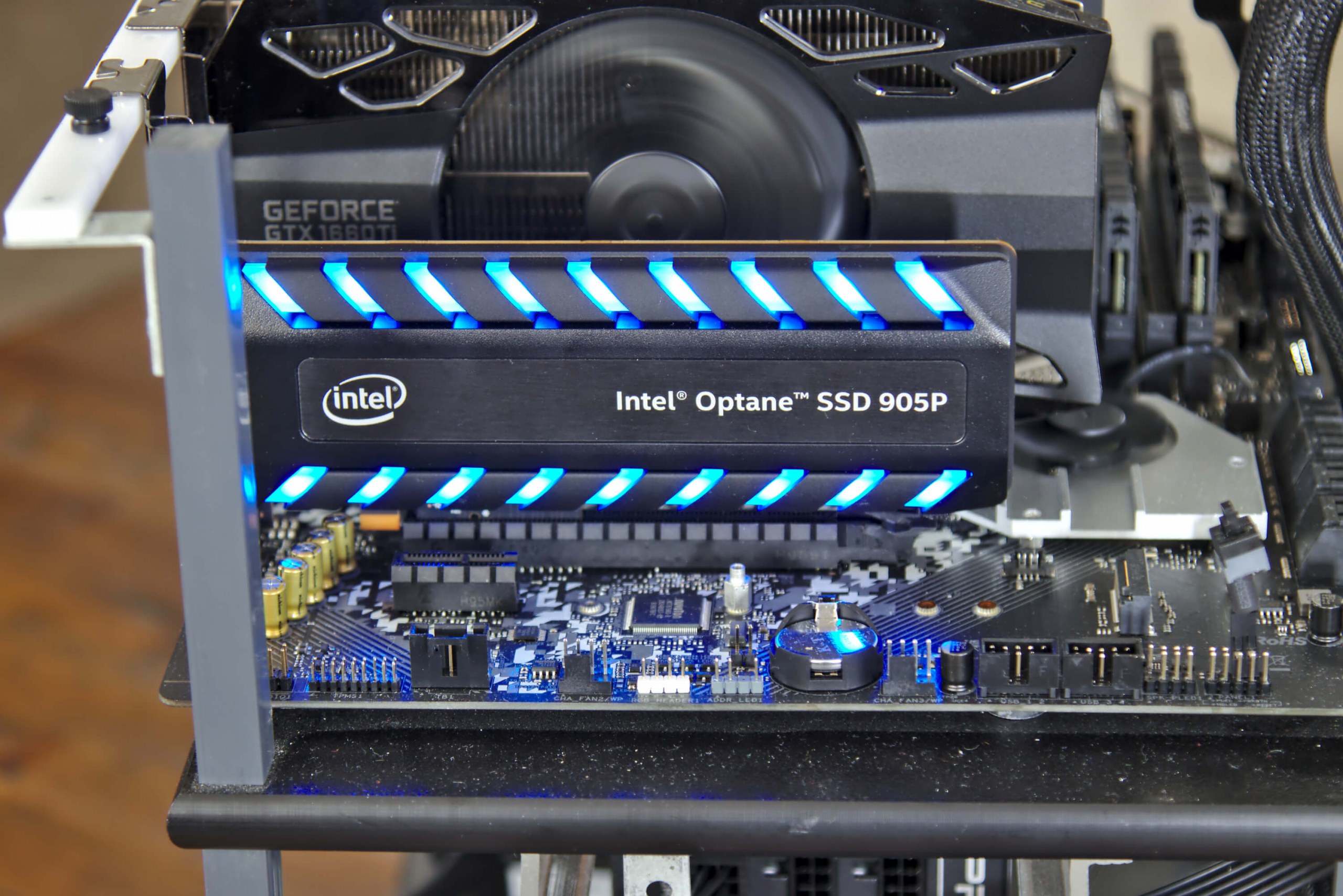
Performance
We'll move on to performance tests now, starting with synthetics. The showtime test is for raw sequential performance. This shows the absolute fastest the drive tin can become given a perfect scenario. By testing with dissimilar transfer sizes, nosotros can see how the drives perform with unlike types of files.
The results are a bit all over the place, so let'due south break them downward. Starting with the read performance, all three PCIe 4.0 drives are equivalent at the top of the chart. Since they take the same controller and NAND, this is what nosotros'd await. The 970 Pro is side by side, although nosotros see a sharp drib off as the file size increases. The Optane drive is the slowest hither since raw sequential operation is not its priority.
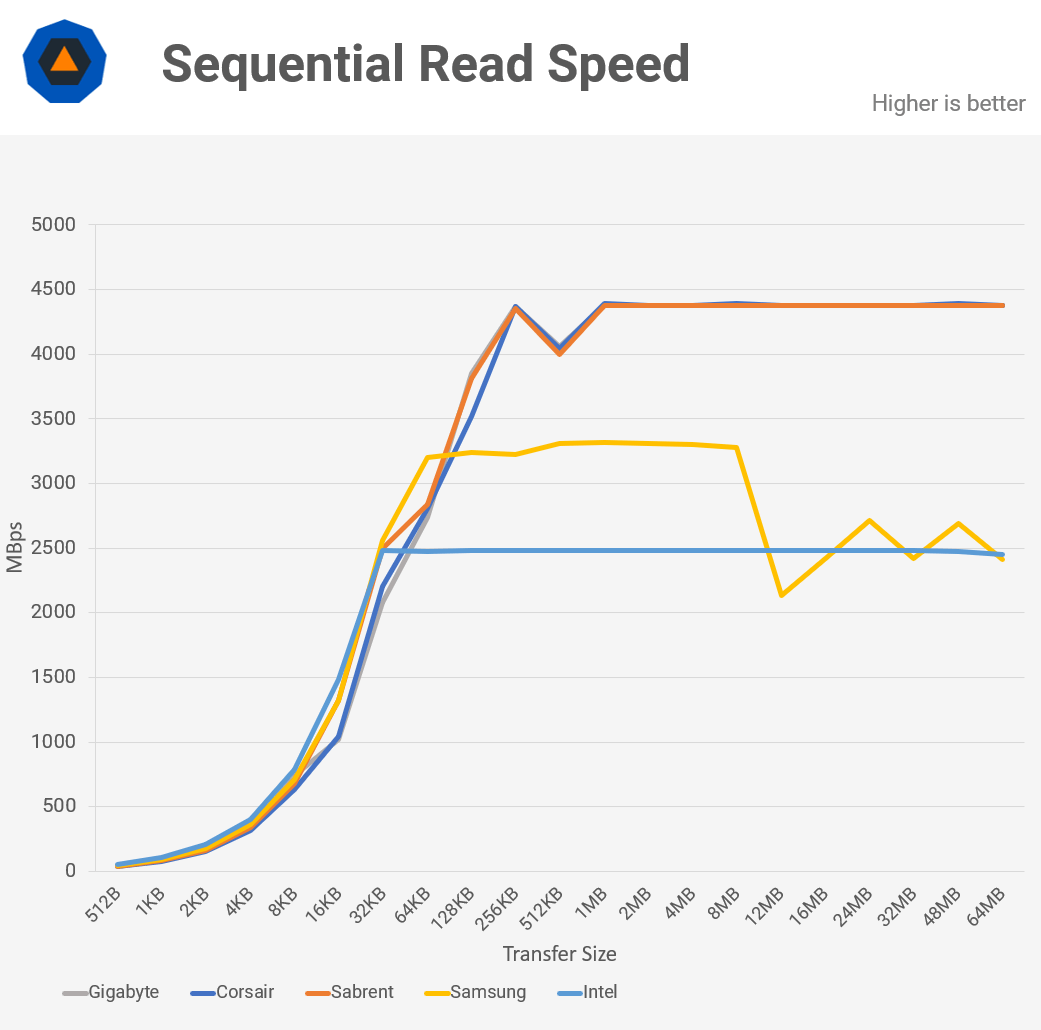
Write speeds are a tad messier. The Sabrent and Corsair drives both reached the highest speed of just nether 4GBps, but the Corsair drive took longer to get in that location and had a dropoff in the centre.
The Sabrent Rocket iv bulldoze was much faster to the top and stable once it maxed out. Since nosotros accept the 500GB version of the Gigabyte Aorus drive, information technology is limited to 2400MB/s. The 1TB and 2TB versions of the Aorus line aren't express and should be closer in performance to its competitors and vice versa, in the case of Sabrent and Corsair's 500GB drives, then don't look into this too much. The Samsung and Intel drives finish in the same order as with the read exam.
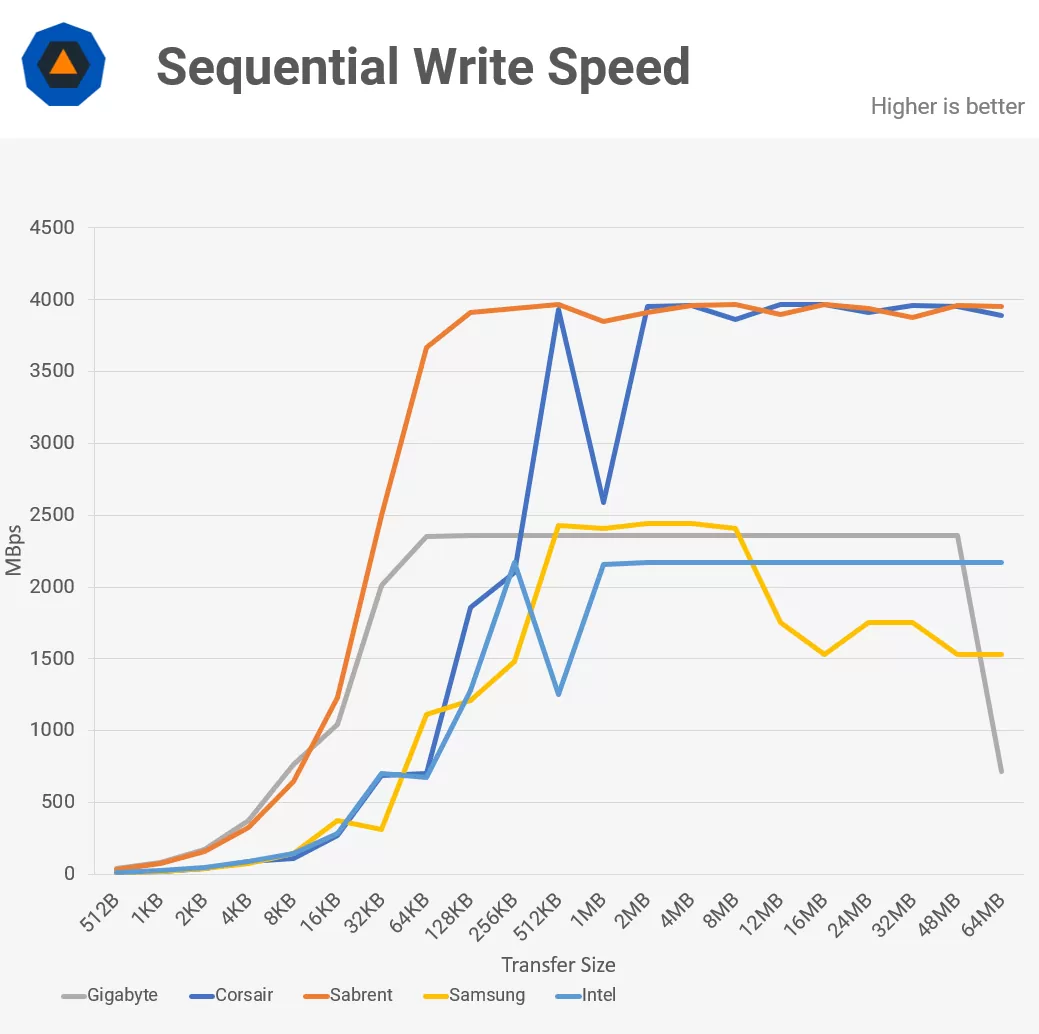
Side by side we'll get to IOmeter which is a swell all-around storage benchmarking utility that allows for very customized tests. In virtually use cases, drive reads happen much more than oftentimes than drive writes. Data accesses are also a mix of random and sequential. To encompass the most common scenarios, we ran with a 16KB transfer size, lxx% read / 30% write, and fifty% random. The tests were ran twice: with a single request and a queue of 64 requests. This measurement is called Queue-Depth. Desultory employ such as during spider web browsing or light desktop applications is likely to have a low queue-depth. On the other hand, heavy use like content creation or other data-intensive tasks volition take a college queue depth since there are more drive accesses waiting to be processed.

Starting with total transfer speed, the Intel Optane runs away at the lower queue-depth. This is expected since the drive is designed for tasks exactly similar this. Moving upward to 64, the Optane drive'due south low sequential performance starts to hurt information technology. The Sabrent drive is the clear winner here and is about 500MB/southward faster than the contest. Surprisingly, the PCIe iii.0 Samsung 970 Pro bulldoze is right in it with the PCIe 4.0 drives. The actress bandwidth from Gen 3 to Gen iv doesn't brand a difference hither at all hither.
In addition to speed, latency is also extremely important when measuring drive performance. The Optane drive excels here since one of its main features is fast access times. Second identify again goes to the Sabrent drive. Likewise that, the residue of the drives are very close and see no benefit from the new standard.
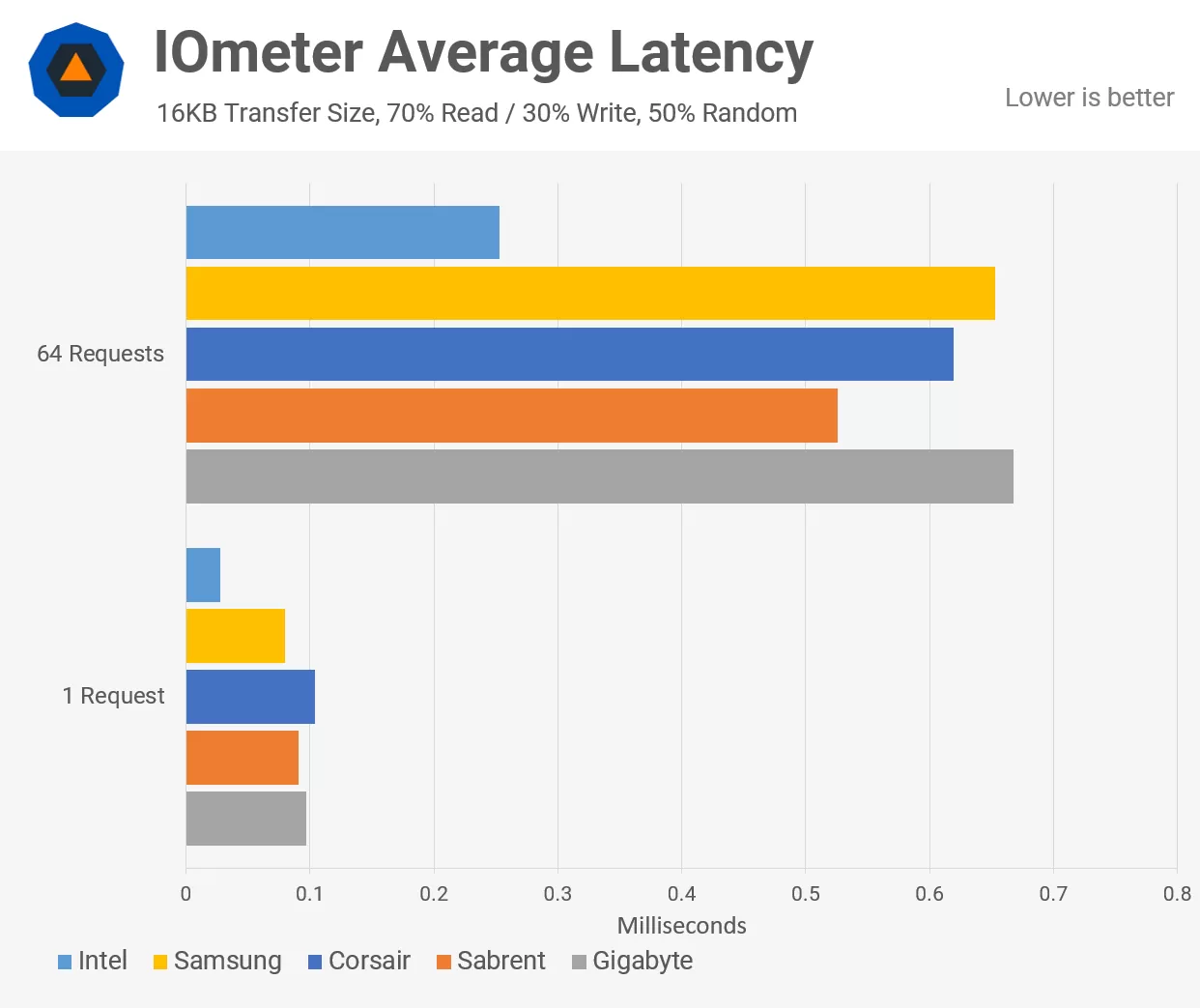
Adjacent up we'll get to real-world benchmarks. The beginning test is PCMark 8'south Storage Benchmark which is comprised of several storage access traces from mutual applications. Although it looks like a synthetic exam, from the drive's perspective, it sees read and write requests identically as if the user was using the real programs. These include Microsoft Office, some video games, and Adobe Photoshop. The Intel Optane drive wins handily since information technology is designed for productivity and fast accesses. The rest of the drives are very close although nosotros'll give the slight edge to the Samsung 970 Pro. Raw sequential read and write speeds aren't as important here since typical file usage comes in short bursts of small files.
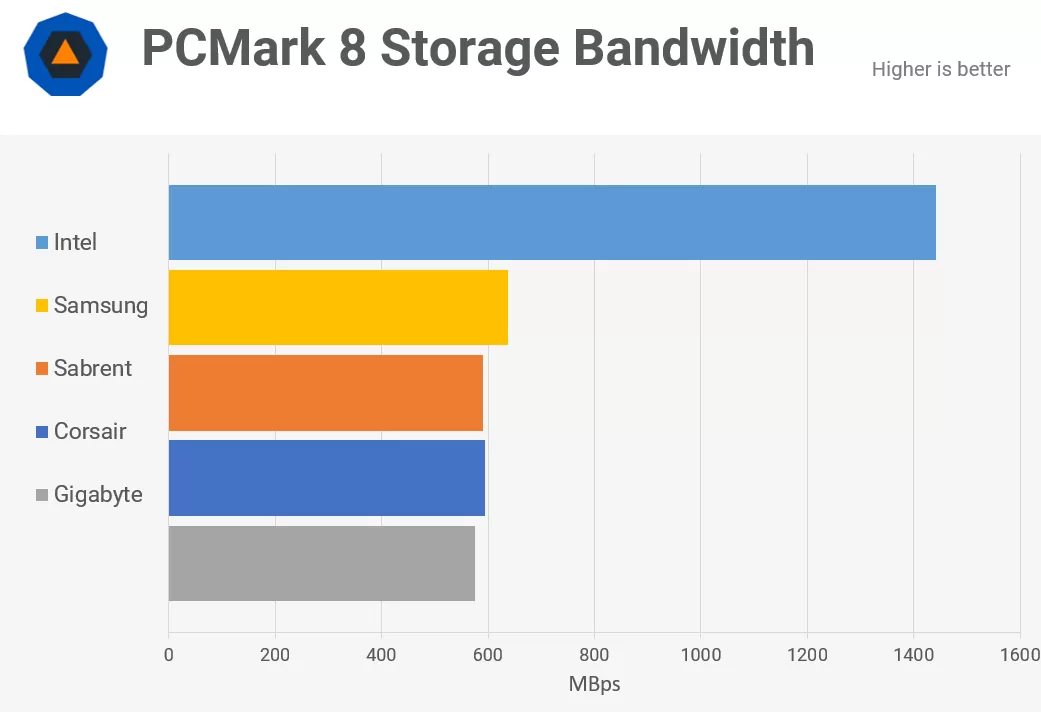
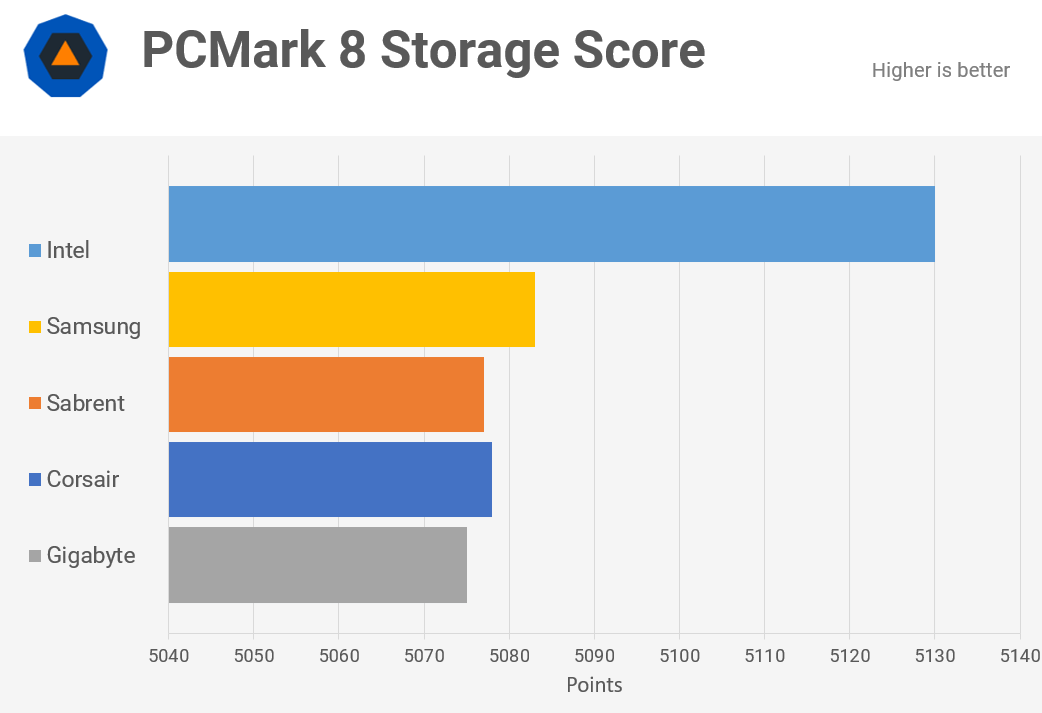
Adjacent we'll explicitly look at game load times for Counter-Strike: Global Offensive and Shadow of the Tomb Raider. The results were all within about 2 seconds so you'll likely never observe a divergence. The Samsung drive manages to slightly edge out the competition thank you to Samsung's smashing firmware and bulldoze management. Second place goes to the Sabrent drive.
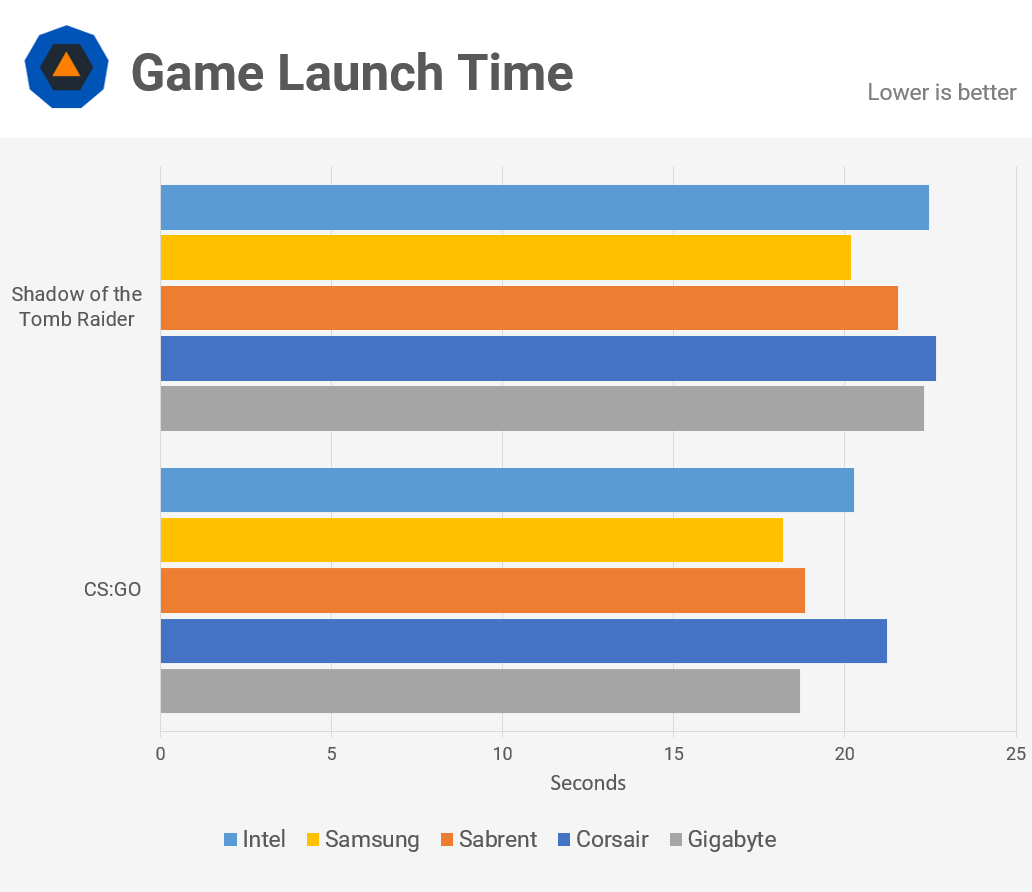
The last tests nosotros'll look at are file copy and Windows boot times. Besides gaming and productivity, this is the other way a drive is likely to be used and unremarkably measured. Both file copies were about 20GB in size. The large exam was comprised of almost 20 separate 1GB files and the small test had about 20,000 files.
Even though both tests transferred roughly the same amount of information, the smaller test took much longer due to the increased overhead in processing each file. The Sabrent drive is the winner hither with the Gigabyte and Intel drives coming in a close 2nd.
The Samsung and Corsair drives were a tad behind with the pocket-sized file copies. This may be due to internal caches filling upward only it's difficult to say for sure. Windows ten boot time is the closest of them all. All drives were within 1 second of each other, then yous'll never notice the difference.
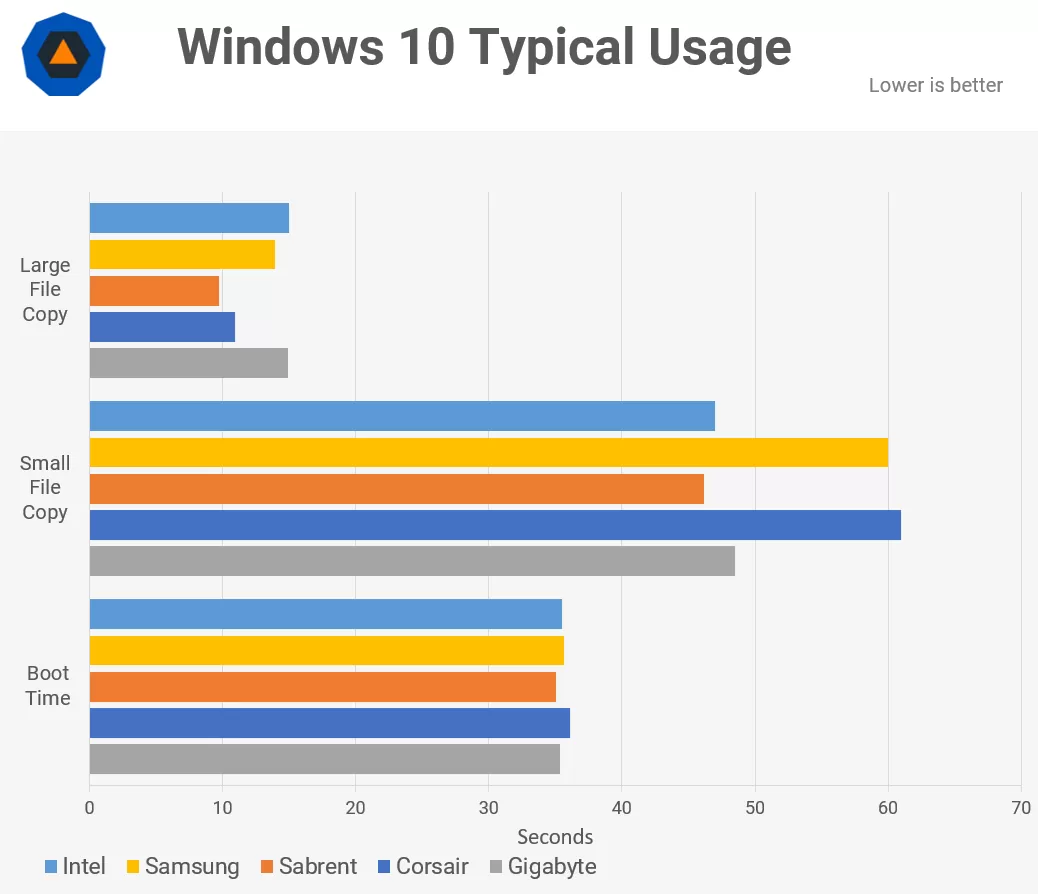
Wrap Up
Looking at the cream of the storage ingather, the results were about what we expected. The Optane drive is the king of productivity, but yous pay for it and information technology's not actually meant for consumers. Information technology volition price you more than two RTX 2080 Super GPUs if you lot know what I mean.
However, it should be highlighted how relatively close these drives are when information technology comes to running mainstream applications. The throughput offered by top-of-the-line NVMe SSDs that volition price you around $200 for 1TB of storage is impressive and far from the arm and leg that we used to pay for these only a few short years agone.
The three PCIe 4.0 drives were close in most tests with the Sabrent Rocket 4 winning by a slim margin. The Samsung 970 Pro still performs very well and even won in our game launch tests. This makes information technology articulate that there isn't much of an advantage to getting a Gen 4 SSD if yous already take a fast Gen 3 SSD. Compared to more of the mainstream, commodity Gen 3 drives, the Gen 4 drives will give you lot a performance boost in very select workloads.
If you are building a new high end PC and have the budget, we definitely recommend going for a fast NVMe PCIe drive. Samsung'southward Evo line used to get our top recommendation, but Sabrent'southward Rocket Gen 4 SSD is definitely worthy of your consideration. If you don't do content creation or other data-intensive work, there won't be much do good, though down the road there may be some scenarios that can take advantage of the full 5GB/s speed. Much of the Gen 4 SSD launch is marketing hype, just it's true that the drives are considerately faster, and then it's always great to run into engineering science progress.
Shopping Shortcuts:
- Sabrent Rocket PCIe iv.0 SSD on Amazon
- Corsair MP600 PCIe 4.0 SSD on Amazon
- Gigabyte Aorus PCIe four.0 SSD on Amazon
- Intel Optane SSD 905P on Amazon
- Samsung 970 Pro on Amazon
- Samsung 970 Evo Plus on Amazon
Source: https://www.techspot.com/review/1893-pcie-4-vs-pcie-3-ssd/
Posted by: watsonseensess.blogspot.com


0 Response to "PCIe 4.0 vs. PCIe 3.0 SSDs Benchmarked"
Post a Comment